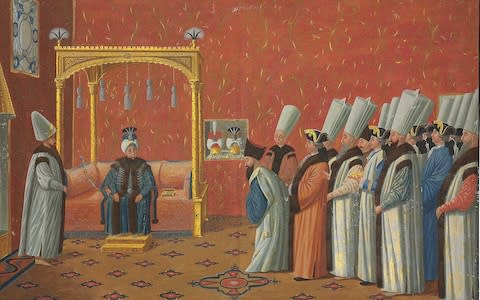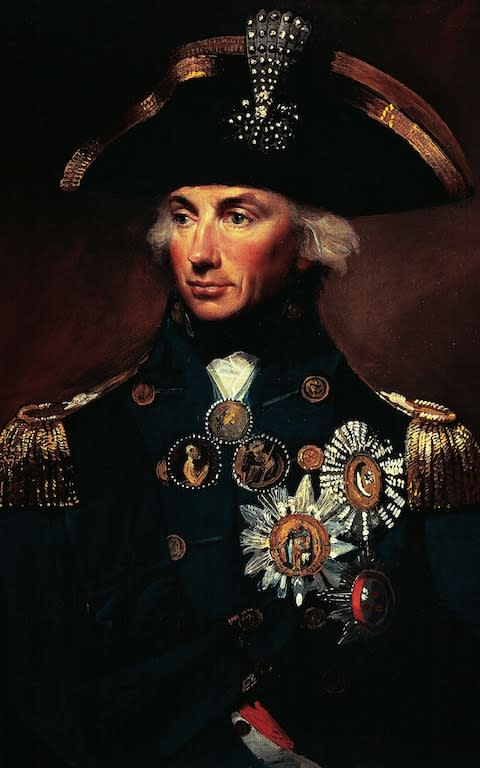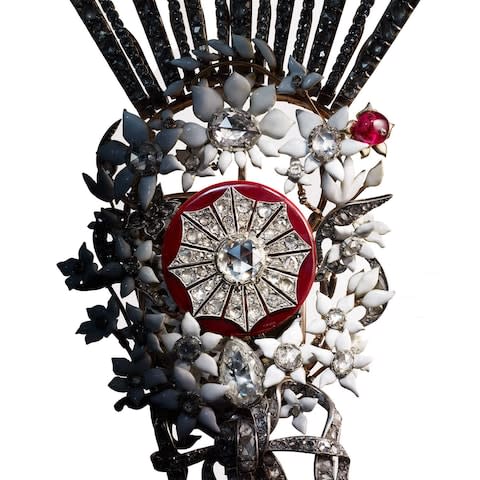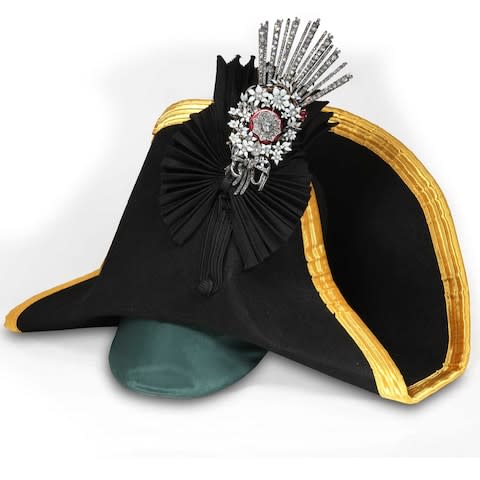The story of Nelson's most treasured possession, now recreated and on show

The Levant – roughly comprising what are now Syria, Jordan, Israel, Lebanon and bits of Turkey and Egypt – was, for 18th-century England, a faraway land awash with spices, silks, perfumes and gemstones. A place of mystery and luxury where fortunes were to be made.
In 1798, that profitable paradise was threatened when the French government dispatched an armada of ships under the rising star General Bonaparte into the Mediterranean: destination unknown. With fears of a French invasion of India, London ordered 39-year-old Rear-Admiral Sir Horatio Nelson – whose exploits against the Spanish at the recent battle of Cape St Vincent had captured the public imagination – to seek out and destroy the enemy fleet.
After weeks of searching, on 1 August, Nelson discovered 13 enemy warships anchored in Aboukir Bay, Egypt. Without hesitating, Nelson led his squadron into the bay and, after a brutal and debilitating encounter, completely overwhelmed and defeated his foe. It was a stunning victory, making Nelson, quite literally, an overnight sensation, known for the rest of his life as ‘The Hero of the Nile’. But it was not only the grateful merchants of the City of London and George III who showered Nelson in jewelled orders, awards and titles.

The Sultan of Turkey, Selim III, whose territory had been violently occupied by the French, was equally thankful. He selected the richest turban jewel from the Imperial treasury at the Topkapi Palace in Constantinople to send to the victorious Admiral. The jewel was a Chelengk – from the Turkish ?elenk, describing a wreath of flowers – seen in Ottoman culture as the ultimate recognition for bravery in battle.
It was the first such award given by an Islamic leader to a non-Muslim. The extraordinary jewel was some seven-inches long and set with more than 300 rose-cut diamonds. Later, Nelson himself added to the number of trembling diamond rays atop the jewel to represent the 13 ships he had destroyed or captured during the battle. The jewel’s most astonishing feature, though, was its ingenious clockwork mechanism that rotated a diamond Ottoman star on a central red enamel disc, making the surrounding wreath of white enamelled flowers shiver on hidden springs.
Every detail had been carefully thought through and was rich in allegorical meanings: the flowers reflected the Turks’ love of nature, while the single cabochon ruby set to one side was believed to protect the wearer. This precious ruby would have travelled thousands of miles along the Silk Road after being smuggled out of Burma, where all rubies were the property of its ruler. Bejewelled insignias were important status symbols of the imperial Ottoman family, and tales of their splendour inspired skilled craftsmen to flock to Constantinople in the hope of work.

Nelson took to wearing the Chelengk on his naval hat like a turban ornament, to the disapproval of his Hanoverian monarch. Unsurprisingly, the treasure caused a sensation in England, where wildly inaccurate images of this strange foreign jewel were reported in the fashion press and in portraits of the Admiral, sparking a craze for similar-looking ornaments called aigrettes.
The jewel was the Admiral’s most-prized possession; he incorporated it into his coat of arms to symbolise his achievements and to cement his exotic persona in the public imagination. It was common then for men to wear jewellery, far more so than women, predominantly as a sign of their rank and power. Nelson would have been fully aware of the importance of the art of intimidation through jewels.
Today, the reasons may have changed, but once again, men’s jewellery is a growing industry. Certainly, the Chelengk would not look out of place on a satin shawl lapel. Its destiny, however, was to be a little more chequered. After Nelson’s death just seven years later at the Battle of Trafalgar, the treasured Chelengk passed down through his family, until it was sold at Christie’s in 1895.

By then many of its features, including the wreath of flowers, ruby and clockwork mechanism, had been removed to make it more wearable. Eventually, it was given to the National Maritime Museum in Greenwich, from where it was stolen in June 1951, never to be seen again. The thief, a notorious cat burglar called George ‘Taters’ Chatham – an underworld associate of Eddie Chapman, aka Agent Zigzag, and the Great Train Robber Bruce Reynolds – who preyed on museums, later claimed the jewel was immediately broken up for its diamonds. This precious sliver of history was lost forever.
Until last year, when Martyn Downer, a former director and head of jewellery at Sotheby’s and leading Nelson scholar, unearthed a life-size drawing of the original jewel at the College of Arms in London. It had lain unnoticed in the college archives since Nelson’s death in 1805.
"The drawing wasacomplete revelation," says Downer, "as it showed in precise, life-size detail hither to hidden, and then lost, features like the ruby and the enamelled flower heads. Few artists had access to the jewel when they painted Nelson so they relied on rumour and printed accounts, producing wildly varying images of it. Seeing the Chelengk as Nelson knew it was sensational."

The drawing was so detailed that it spurred Downer to partner with London jeweller Symbolic & Chase to recreate this fabled treasure using traditional techniques, materials, and stones recovered from 18th-century jewels. Symbolic & Chase turned to Philip Denyer, a master goldsmith with some 40 years’ experience working on the finest and rarest jewels. "Since I was an apprentice, I’ve worked on many period pieces, repairing and restoring tiaras, boxes, watches, clockwork movements and old jewellery," says Denyer, "but never did I think I’d ever have the opportunity to put everything I’d learnt over a lifetime into just one piece."
From foil-backed diamond settings and en tremblant springs, to figuring how to fit a period clockwork movement among the delicate enamel flowerheads, every detail had to be worked out from the old drawing and Denyer’s experience of antique jewels. In the end,with a team of seven craftspeople, it took more than 550 painstaking hours to recreate the lost Chelengk. And when it was unveiled in the Great Cabin of Nelson’s flagship Victory on Trafalgar Day, 21 October, last year, it caused the same gasps of astonishment as the original had more than two centuries ago.
The splendid new Chelengk, displayed on an exact replica naval hat, specially made to Nelson’s original specifications by his hatters Lock & Co of St James’s, will now remain on show. A part of history recreated in all its glory.
Nelson’s Chelengk, with silverware owned by Nelson, is at The Goldsmiths’ Hall, London, 12-23 March (10am-4pm), in collaboration with the Goldsmiths’ Centre; and 27 March- 1 June at National Museum of the Royal Navy Portsmouth. Nelson’s Lost Jewel by Martyn Downer (The History Press, £20)